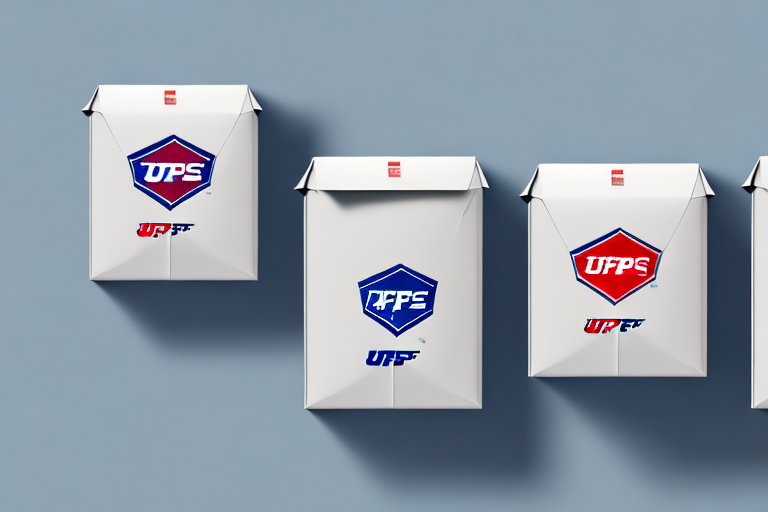Comparing USPS Shipping Rates, UPS, and FedEx
When it comes to shipping packages within the United States or around the world, consumers and businesses have several reliable options. Three of the most prominent carriers are the United States Postal Service (USPS), United Parcel Service (UPS), and FedEx. This article provides an in-depth analysis of each carrier's shipping options, rates, and services, helping you determine which one best suits your needs.
How USPS, UPS, and FedEx Set Their Shipping Rates
The cost of shipping a package with USPS, UPS, or FedEx is influenced by several factors, including:
- Package Weight and Dimensions: Heavier and larger packages generally cost more to ship.
- Distance Traveled: Longer distances typically result in higher shipping costs.
- Delivery Time Frame: Faster delivery options come at a premium.
- Shipping Services Chosen: Services like overnight delivery or signature confirmation increase costs.
Each carrier offers a variety of shipping services with different speed and delivery guarantees. Evaluating these options carefully ensures you choose the best carrier and service level for your specific needs. According to the USPS 2023 Annual Report, packaging innovations and fuel surcharges also play roles in rate determination.
Additionally, the type of package being shipped affects shipping rates. Fragile or special-handling items may incur extra fees, while hazardous materials often require specialized packaging and labeling, increasing costs. It's essential to be aware of any special requirements or restrictions when shipping certain items to avoid unexpected fees or delivery delays.
Domestic Shipping Options: USPS, UPS, and FedEx
For domestic shipping within the United States, USPS, UPS, and FedEx offer a range of services:
- Standard Ground Shipping: Cost-effective for non-urgent deliveries.
- Expedited Shipping: Faster delivery times at higher costs.
- Overnight Delivery: Next-day delivery for urgent shipments.
USPS provides a variety of flat-rate boxes and envelopes, which can be more economical for smaller items. In contrast, UPS and FedEx offer similar services but with nuanced pricing structures based on package weight and delivery distance. According to a 2023 study by Bureau of Labor Statistics, average shipping costs have risen by 5% across all carriers due to increased fuel prices.
All carriers also offer additional services such as signature confirmation, insurance, and package tracking, providing added security and peace of mind for both senders and recipients. Comparing rates and delivery times across USPS, UPS, and FedEx ensures you receive the best value for your specific shipping needs.
International Shipping Options: USPS, UPS, and FedEx
When shipping internationally, USPS, UPS, and FedEx each provide unique services:
- USPS: Offers options like Priority Mail International and Global Express Guaranteed, which provide expedited delivery times.
- UPS: Provides international express and standard shipping with comprehensive tracking features.
- FedEx: Delivers international express services with guaranteed delivery times.
International shipping tends to be more expensive due to customs fees and taxes. For instance, shipping a 10-pound package to Europe via USPS averages around $60, whereas UPS and FedEx might charge between $70 and $90 for similar services, based on Statista's 2023 data.
It's crucial to understand the destination country's restrictions and regulations, as some prohibit shipping items like food, plants, and electronics. Researching these regulations beforehand prevents potential delays or issues. Additionally, purchasing insurance for international shipments is recommended to protect against loss or damage during transit.
Which Carrier is the Most Cost-Effective for Small Packages?
For small packages, USPS often emerges as the most cost-effective option. Their flat-rate boxes and envelopes are ideal for small, heavy items within specified size limits. For example, a USPS Priority Mail Flat Rate Box typically costs around $15, regardless of weight up to 70 lbs, providing significant savings compared to UPS or FedEx, which calculate costs based on weight and distance.
However, if you're shipping larger packages, UPS or FedEx might offer more competitive pricing. Additionally, for international shipments, UPS and FedEx generally provide better rates and more reliable delivery options compared to USPS.
Delivery speed is another critical factor. If you require rapid delivery, UPS or FedEx's expedited services may be more suitable, though at a higher cost. Conversely, if speed is not a priority, USPS remains the most economical choice for small packages.
Which Carrier is the Most Cost-Effective for Large Packages?
Shipping large packages can significantly increase costs. In such cases, comparing rates among USPS, UPS, and FedEx is essential. UPS and FedEx often offer more competitive pricing for larger items due to their broader size and weight limitations compared to USPS.
The destination also influences cost-effectiveness. Certain carriers have stronger networks in specific regions, providing faster and more reliable delivery. For instance, UPS has robust infrastructure in the Northeast U.S., while FedEx excels in the West Coast.
Customer service quality is another consideration. Responsive and helpful customer support can be invaluable, especially when dealing with large shipments. Researching customer reviews and testimonials can help identify which carrier offers superior support.
Which Carrier Offers the Fastest Delivery Times?
All three carriers provide a range of shipping options with varying delivery times:
- USPS: Global Express Guaranteed is USPS's fastest international service, offering delivery in 1-3 business days.
- UPS: Offers next-day delivery within the U.S. through UPS Next Day Air, and similar expedited options internationally.
- FedEx: Provides overnight delivery services via FedEx Priority Overnight and internationally through FedEx International First.
While these fast delivery options ensure packages arrive quickly, they come at a higher cost. For example, overnight shipping with FedEx may cost upwards of $100 for a standard package. Additionally, factors like destination, package size, and weight can impact delivery times. It's advisable to compare shipping options and prices to find the best balance between speed and cost.
How to Track Your Package with USPS, UPS, and FedEx
Tracking your shipment is straightforward with all three carriers. Here's how:
- USPS: Enter your tracking number on the USPS Tracking page to receive real-time updates.
- UPS: Use the UPS Tracking tool by entering your tracking number for detailed shipment information.
- FedEx: Visit the FedEx Tracking page and input your tracking number to monitor your package's journey.
All carriers offer mobile apps that provide easy access to tracking information, ensuring you're always informed about your shipment's status.
How to Insure Your Package with USPS, UPS, and FedEx
Shipping insurance protects your valuable or fragile items against loss or damage during transit. Here's how each carrier handles insurance:
- USPS: Offers insurance coverage up to $5,000 through Priority Mail and Priority Mail Express services.
- UPS: Provides declared value coverage, allowing you to declare a higher value for your shipment beyond the standard insurance.
- FedEx: Similar to UPS, FedEx offers declared value coverage, tailored to the needs of high-value shipments.
Costs and coverage levels vary based on the carrier and the service level selected. It's crucial to review each carrier's insurance policies to ensure adequate protection for your packages. Refer to the USPS Insurance Guide, UPS Insurance Policy, and FedEx Insurance Terms for detailed information.
Shipping Discounts Available from USPS, UPS, and FedEx
All three carriers offer shipping discounts for frequent shippers or those who send large volumes:
- USPS: Discounts are available through business accounts, commercial pricing, and online postage purchases.
- UPS: Offers volume-based discounts, loyalty programs, and negotiated contracts for businesses.
- FedEx: Provides discounts through FedEx Advantage Programs, business accounts, and long-term contracts.
Exploring these discount options can result in significant savings on your shipping costs. For example, businesses shipping over 500 packages a month with UPS can receive substantial rate reductions. Visit the respective USPS Discounts, UPS Discounts, and FedEx Discounts pages to learn more.
Comparison of Shipping Services Offered by USPS, UPS, and FedEx
The table below provides a comparison of some of the most popular shipping services offered by each carrier:
| Service | USPS | UPS | FedEx |
|---|---|---|---|
| Standard Ground | ✔ | ✔ | ✔ |
| Expedited Shipping | ✔ | ✔ | ✔ |
| Overnight Delivery | ✔ | ✔ | ✔ |
| International Express | ✔ | ✔ | ✔ |
| International Priority | ✔ | ✔ | ✔ |
| Global Express Guaranteed | ✔ | ✘ | ✘ |
It's important to note that rates and delivery times are subject to change and may vary based on package size, weight, and destination. For the most accurate information, refer to the USPS Services, UPS Services, and FedEx Services pages.
Parcel Pick-Up Services Offered by USPS, UPS, and FedEx
All three carriers provide parcel pick-up services for added convenience:
- USPS: Schedule a free pick-up for regular shippers through the USPS website.
- UPS: Offers free daily pickups for UPS account holders, with additional scheduled pickups available for a fee.
- FedEx: Provides free pick-up for FedEx One Rate and certain other services, with paid options for scheduled pickups.
These services are typically free for regular shippers, though some restrictions may apply. Utilizing parcel pick-up can save time and streamline your shipping process.
Customer Service Comparison Between USPS, UPS, and FedEx
Effective customer service is crucial when dealing with shipping issues. Here's how USPS, UPS, and FedEx compare:
- USPS: Offers customer support via phone, email, and in-person at local post offices. However, response times can vary based on demand.
- UPS: Provides comprehensive support through phone, email, and live chat. UPS is often praised for its responsive customer service.
- FedEx: Similar to UPS, FedEx offers multi-channel support, including phone, email, and live chat, with generally positive customer feedback.
User experiences may differ, so it's beneficial to research customer reviews and testimonials. According to Jurix's 2023 Customer Satisfaction Report, UPS ranks slightly higher in customer satisfaction compared to USPS and FedEx.
Shipping Options for Businesses: USPS vs UPS vs FedEx
For business owners, shipping is a critical component of operations. Here's how each carrier caters to business shipping needs:
- USPS: Offers business accounts, commercial pricing, and a wide range of shipping options suitable for diverse business needs.
- UPS: Provides comprehensive business solutions, including supply chain management, bulk shipping discounts, and specialized shipping accounts.
- FedEx: Features business-oriented services such as FedEx Ship Manager, bulk shipping discounts, and tailored logistics solutions.
Businesses primarily shipping within the United States may find UPS and FedEx more competitive in terms of rates and delivery times. Conversely, businesses with significant international shipping needs might prefer USPS for its extensive global network and cost-effective options.
Understanding Dimensional Weight Calculations for Shipping
Dimensional weight calculations help carriers determine shipping costs based on the package's size relative to its weight. This method ensures that larger, lighter packages do not consume disproportionate space and resources. The formula typically used is:
Dimensional Weight (lbs) = (Length x Width x Height) / Dimensional Factor
For example, if you have a package measuring 20" x 20" x 20" and the dimensional factor is 139, the dimensional weight would be approximately 57 lbs. If the actual weight is less than the dimensional weight, the dimensional weight is used for pricing.
Understanding dimensional weight calculations allows you to better estimate shipping costs and optimize packaging, potentially saving on shipping expenses.
Benefits of Using a Third-Party Shipping Calculator for Comparing Rates
Third-party shipping calculators are valuable tools for comparing rates and options across multiple carriers. Benefits include:
- Time Efficiency: Quickly compare rates without visiting each carrier's website.
- Comprehensive Comparison: View side-by-side comparisons of services, rates, and delivery times.
- Cost Savings: Identify the most cost-effective shipping options tailored to your needs.
Examples of popular shipping calculators include ShipStation, Stamps.com, and Shippo. While these tools are convenient, it's important to verify their accuracy, as they may not always reflect the latest rates and carrier policies.
In conclusion, comparing shipping rates and services among USPS, UPS, and FedEx involves considering multiple factors such as package size, weight, destination, and delivery speed. By thoroughly evaluating each carrier's offerings, rates, and services, you can determine the most suitable and cost-effective option for your specific shipping needs. Whether you're shipping domestically or internationally, small or large items, informed decision-making can help you save money, avoid unexpected fees, and ensure timely and secure delivery of your packages.




















